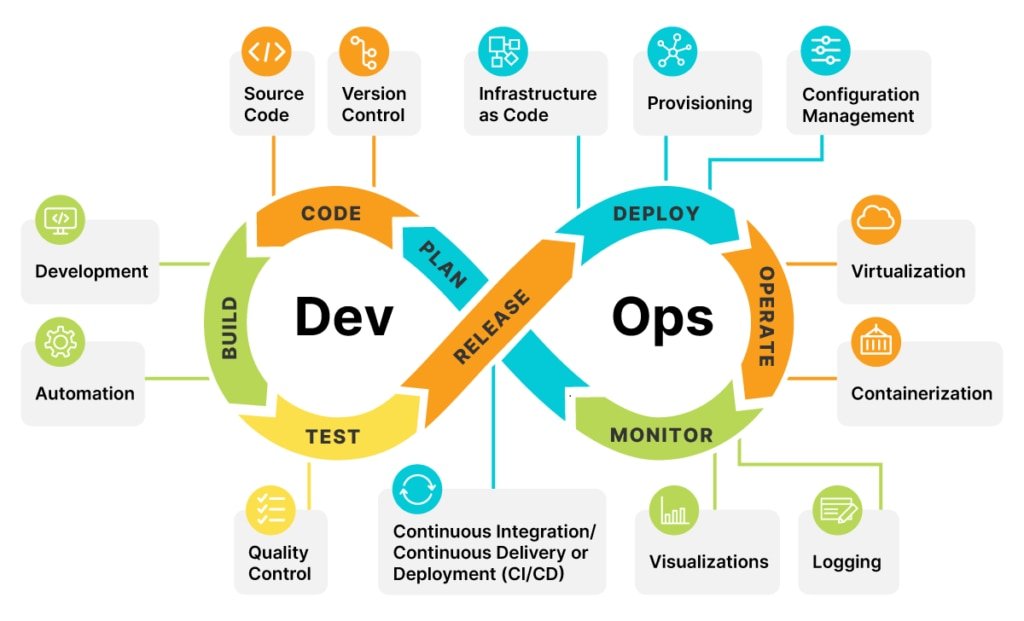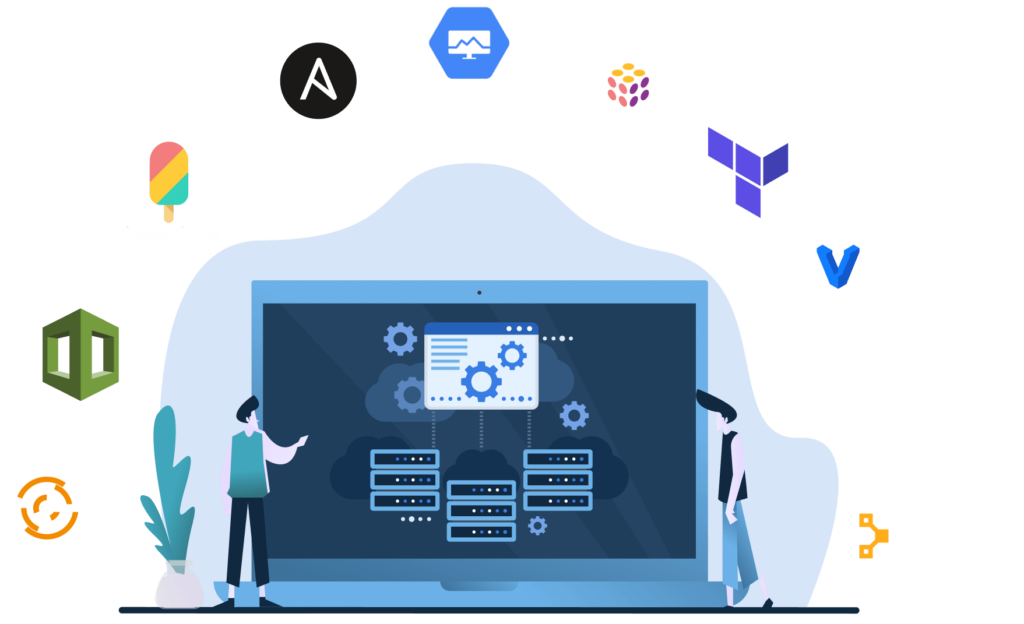Understanding the Role of a Cloud Solutions Architect
Defining the Position: What is a Cloud Solutions Architect?
A Cloud Solutions Architect is a critical role in the field of IT, particularly in the era of cloud computing. They are responsible for overseeing the company’s cloud computing strategy, including managing cloud adoption plans, cloud application design, and cloud management and monitoring. In this role, they play an instrumental part in transforming businesses by helping them shift their operations to a cloud-based infrastructure.
The Interface Between DevOps and Cloud Architecture
At the intersection of DevOps and Cloud Solutions Architecture, there is a unique synergy that enhances operational efficiency. The Cloud Solutions Architect often works closely with DevOps teams to ensure that the infrastructure supports the rapid deployment of code and swift resolution of system or application issues. They architect the cloud environment with DevOps principles in mind, ensuring scalability, speed, and security.
Key Responsibilities of a Cloud Solutions Architect in a DevOps Environment
In a DevOps environment, a Cloud Solutions Architect has several key responsibilities. These include designing and deploying dynamically scalable, highly available, fault-tolerant, and reliable applications on the cloud. They also select appropriate cloud services to design and deploy an application based on given requirements. Furthermore, they provide expertise on platform services, understanding the best practices for architecture and guiding the team accordingly. It’s also their responsibility to lead efforts in maximizing benefits derived from cloud technologies, using automation tools, and implementing continuous integration and continuous delivery pipelines.
The Intersection of DevOps and Cloud Architecture
Understanding DevOps in Cloud Architecture
DevOps is a key strategy that integrates software development (Dev) and IT operations (Ops), aiming for shorter development cycles, increased deployment frequency, and more dependable releases. This coordination is crucial in the context of cloud architecture, as it allows for flexible and reliable management of digital infrastructure.
Cloud architecture refers to the various components – software and hardware – involved in delivering cloud computing services. These components include servers, storage, a network, virtualization software, operating system, and the application itself. When the principles of DevOps are applied in this environment, it creates a space that promotes continuous integration and continuous delivery (CI/CD), fostering efficiency, agility, and faster time-to-market.
The Symbiotic Relationship Between DevOps and Cloud Architecture
The combination of DevOps and cloud architecture creates a symbiotic relationship, enabling organizations to leverage the full potential of both approaches. The cloud provides the necessary platform and scalability for the DevOps model to function effectively. In return, DevOps ensures that cloud deployments occur smoothly, minimizing downtime and enhancing user experience.
The cloud’s scalability complements DevOps’ need for flexibility. DevOps practices like automated testing, continuous integration, and continuous deployment require an environment that can quickly scale up or down based on demand. The cloud meets these requirements by providing an infrastructure that can handle such dynamic changes efficiently.
Enhancing Cloud Performance through DevOps
In a cloud environment, DevOps practices not only streamline processes but also contribute significantly to performance. Automated testing and continuous monitoring, which are integral parts of DevOps, ensure the reliability and stability of cloud services. They help identify bottlenecks and performance issues early, allowing for quick resolution and minimal disruption to the end user.
DevOps also encourages a culture of collaboration and shared responsibility, which is essential in managing the complex nature of cloud architecture. By fostering communication across teams, DevOps helps in quicker issue resolution, efficient use of resources, and improved overall service quality.
In summary, the intersection of DevOps and cloud architecture significantly enhances the efficiency and reliability of cloud services, making it a must-have for any organization looking to leverage the power of cloud computing.
Boosting Efficiency with DevOps in Cloud Solutions
Integrating DevOps into Cloud Architecture
DevOps, an approach that combines software development (Dev) and IT operations (Ops), can significantly enhance the efficiency of cloud solutions. By integrating DevOps into cloud architecture, organizations can accelerate the delivery of software and services, resulting in quicker time-to-market and increased competitive advantage. This integration facilitates a continuous loop of planning, coding, building, testing, releasing, operating, and monitoring, all within the cloud environment. As a result, teams can detect and address issues faster, improving the overall quality of the solutions delivered.
The Role of Automation in DevOps
A key aspect of DevOps that boosts efficiency is automation. Automating repetitive tasks enables teams to shift their focus towards more critical aspects of the project, thereby reducing human error and speeding up production cycles. Cloud environments, with their on-demand resource scalability, perfectly complement this process by providing the necessary infrastructure to implement, run and manage these automated tasks. Consequently, automation through DevOps in the cloud allows businesses to streamline their processes, optimize resources, and reduce time spent on routine tasks.
Enhancing Collaboration with DevOps
DevOps promotes a collaborative culture where developers, operators, and other stakeholders work together throughout the software lifecycle. This collaboration is made more effective in a cloud environment. With shared tools and real-time access to data, teams can easily coordinate and resolve issues collectively. The transparency offered by DevOps in a cloud setting fosters effective communication and seamless workflow. It eliminates the traditional silos between different teams, enabling them to work synergistically towards common business goals.
Risk Mitigation: A Key Benefit of DevOps for Cloud Architects
Cloud solutions architects stand to reap significant benefits from DevOps, particularly in the area of risk mitigation. This approach can greatly enhance the predictability and reliability of cloud architectures, making it a critical strategy for any cloud architect.
Enhanced System Stability
One of the paramount benefits derived from implementing DevOps is the enhancement of system stability. DevOps practices like continuous integration and continuous delivery (CI/CD) allow for frequent code integration and deployment. This not only provides quick feedback on changes but also reduces the chances of integration issues, thereby streamlining the development process and reducing risks associated with late-stage integration.
Improved Security Measures
DevOps ensures security is incorporated right from the initial stages of development, a practice referred to as DevSecOps. This proactive approach enables the early detection and resolution of security vulnerabilities, reducing the overall risk profile. The automation of security checks further increases efficiency while minimizing human error, thus increasing the robustness of the security measures in place.
Efficient Error Handling
Lastly, the efficient error handling provided by DevOps plays a crucial role in risk mitigation. The use of real-time monitoring and logging tools allows teams to quickly identify and address issues as they arise. This rapid response capability reduces downtime and fosters a culture of learning from failures, which is instrumental in preventing similar incidents in the future. By embracing the principles of DevOps, cloud architects can improve their risk management strategies, leading to more reliable and secure cloud solutions.
Case Studies: Successful DevOps Implementation in Cloud Architecture
Amazon Web Services (AWS) and Etsy
Etsy, a global marketplace for unique and creative goods, adopted DevOps and cloud technology using Amazon Web Services to meet the demands of their growing business. By integrating DevOps into AWS, Etsy was able to implement continuous integration and continuous delivery (CI/CD) pipelines, which significantly improved their software deployment speed and efficiency. They also leveraged AWS’ scalable infrastructure to rapidly scale up or down based on their needs, resulting in cost savings and improved customer experience.
Netflix and Chaos Engineering
Netflix is a prime example of successful DevOps implementation in cloud architecture. With a vast customer base worldwide, Netflix needed a highly resilient system that could handle massive traffic and rapidly recover from any failures. They introduced a concept known as Chaos Engineering, where they intentionally inject faults into their systems to improve resilience. By combining this approach with a robust DevOps culture, Netflix has achieved remarkable reliability and scalability in its cloud-based services.
Adobe’s Transition to Cloud-Based Services
Adobe Systems is another great example of successful DevOps implementation in cloud architecture. Historically, Adobe offered its software as standalone products. However, with the advent of cloud computing, Adobe shifted towards offering its software as cloud-based services. This transition required a significant transformation in their development and operations processes. By adopting DevOps practices, Adobe was able to accelerate this transformation, improve collaboration between teams, and deliver high-quality cloud-based services to its customers faster and more efficiently.





